Need some help with Logan Labs soil test results
amnorcal
8 years ago
last modified: 8 years ago
Featured Answer
Sort by:Oldest
Comments (11)
morpheuspa (6B/7A, E. PA)
8 years agoamnorcal
8 years agoRelated Discussions
Need help with Logan Lab test results
Comments (2)The Total Exchange Capacity (M. E.) is another way of expressing the Cation Exchange Capacity or the ability of a soil to transfer nutrients, moisture, etc. Perhaps this link will help explain that for you. http://soilminerals.com/Cation_Exchange_Simplified.htm Soil organic matter is a bit low. While 5 percent is not bad many of us organic growers prefer something in the 6 to 8 percent range. Calcium is a bit low and Magnesium is a bit high and that means the Calcium to Magnesium ratio is out of kilter. Phosphorus is about where it should be (25 to 85 ppm, divide pounds per acre by 2 to get ppm) while Potassium is a bit low. If Logan Labs does not provide recommendations to correct any deficiencies perhaps your county horticulturist at the Purdue Cooperative Extension Office may. It is too bad that Purdue no longer does soil testing. I have heard that the University of Kentucky would soil test for people in Indiana. kimmq is kimmsr...See MoreLogan Lab soil test - need help with results
Comments (7)The soil pH for citrus trees (Oranges) is in the 6.0 to 7.0 range, slightly acidic to neutral and at a soil pH of 6.9 yours is there, but the amount of organic matter in the soil is a bit low at 4.4 percent. Phosphorus (P) is quite high while Potassium (K) is about right as is Calcium and Magnesium. How well does the soil this tree is planted in drain? What does this soil smell like? What kind of life (earthworms, etc.) is in that soil? How well does the soil retain moisture? Perhaps these simple soil tests may help, 1) Soil test for organic material. From that soil sample put enough of the rest to make a 4 inch level in a clear 1 quart jar, with a tight fitting lid. Fill that jar with water and replace the lid, tightly. Shake the jar vigorously and then let it stand for 24 hours. Your soil will settle out according to soil particle size and weight. For example, a good loam will have about 1-3/4 inch (about 45%) of sand on the bottom. about 1 inch (about 25%) of silt next, about 1 inch (25%) of clay above that, and about 1/4 inch (about 5%) of organic matter on the top. 2) Drainage. Dig a hole 1 foot square and 1 foot deep and fill that with water. After that water drains away refill the hole with more water and time how long it takes that to drain away. Anything less than 2 hours and your soil drains’ too quickly and needs more organic matter to slow that drainage down. Anything over 6 hours and the soil drains too slowly and needs lots of organic matter to speed it up. 3) Tilth. Take a handful of your slightly damp soil and squeeze it tightly. When the pressure is released the soil should hold together in that clump, but when poked with a finger that clump should fall apart. 4) Smell. What does your soil smell like? A pleasant, rich earthy odor? Putrid, offensive, repugnant odor? The more organic matter in your soil the more active the soil bacteria will be and the nicer your soil will smell, to a point. Too much organic matter can be bad as well. 5) Life. How many earthworms per shovel full were there? 5 or more indicates a pretty healthy soil. Fewer than 5, according to the Natural Resources Conservation Service, indicates a soil that is not healthy. My experience is that Logan Labs does not offer much help beyond the basic soil test but you might take it to your local office of the University of California Cooperative Extension Service where they may be of more help. kimmq is kimmsr...See MoreLogan Labs Soil Test Results & Recommendations Help
Comments (1)I really don't like their recommendations for a number of reasons. One, sulfur doesn't work. Surface applied, you'll lose three quarters to outgassing to the atmosphere as sulfur dioxide (smog), so thanks for the air pollution. :-) They also recommend some rather difficult or expensive sources (11-52-0, for example). I have monoammonium phosphate on hand. You almost certainly don't. And so on. The zinc and copper aren't necessary, both levels are perfectly reasonable in your soil. In the below, I've assumed you have a northern lawn. If that's incorrect, this will still work, but southern lawns would benefit from a slightly different schedule. ME 22.9: This is a little overinflated by your excess calcium, which results in an ME that's somewhat high. I'm using a standard of 15 for soil applications as it's safe to do so. pH 7.6: Kind of high, but get used to it. There's not terribly much you can do about it (as mentioned, surface applied sulfur does not work very well). Fortunately, lawns are extremely tolerant of a pH in this range, although color will suffer a bit. OM 5.5%: In the Good range, so no specific work needs to be done here. Sulfur 13: Well within normal range. Phosphorus 147: While a bit low, it's nothing extreme and unlikely to be causing much in the way of visible problems. Still, with your pH, I'd really prefer this to be in the 260 range (higher pH levels inhibit phosphorus release). We use good old-fashioned starter fertilizer to do this--just get the cheapest as they all work the same. Recommendations below. Calcium 80.8%: High, but not a problem, and almost impossible to dispel. Certainly avoid any calcium sources. Magnesium 12.9%: On paper, a tad low. In reality, it's just fine--your very high Ca levels are masking some of the Mg in your soil. Your plants have no trouble getting all the magnesium they need, and then some. Don't add more. Potassium 1.8%: This is short on paper, and looks shorter in the soil than it really is. It should be enhanced, but not quite to the levels their recommendations listed. We use potassium sulfate (sulfate of potash) for this, which some garden stores and landscape places carry--or they'll order it for you. Recommendations below. Minor Elements: Fine, but I do mention iron and boron below. Iron 110: Just fine and not a problem, but it won't produce the best color at a pH of 7.6. Whenever you like, you can apply Milorganite at the bag rate to very slowly raise this. Boron 0.55: A tad low. This won't be an issue, but I would like to correct it. We use Milorganite as a carrier and 20 Mule Team Borax as the boron source. You can purchase 20 Mules at the grocery store in the laundry section. In a wheelbarrow or the like, dump the Milo. Spraying very, very lightly with water (I use a spray bottle like the kind people use to damp their clothes when they iron) will help the boron stick. Add the recommended amount of 20 Mule Team Borax and stir, spraying occasionally to get the stuff to stick to the Milo. Then apply over the recommended area. So if going for bag rate Milorganite (1 bag per 2,500 square feet), you'd add 7.5 tablespoons of 20 Mule Team Borax. Recommendations: May 10: Apply 3 pounds of potassium sulfate per thousand square feet. Memorial Day: Feed the lawn with starter fertilizer at the bag rate. June 15: Apply 3 tablespoons per thousand square feet (not a misprint!) of 20 Mule Team Borax. Labor Day: Feed the lawn with starter fertilizer at the bag rate. October 1: Feed the lawn with starter fertilizer at the bag rate. October 15: Apply 2 pounds of potassium sulfate per thousand square feet....See MoreHelp with Logan labs soil test results.
Comments (9)Even if it's an acre, you can do it far cheaper yourself (if with a lot of work)... Your soil's actually in fairly good shape, although I do aim for perfection (you did, after all, pay for the test so I assume you want soil in the perfect groove). ME 5.1: Prob'ly a very sandy soil that doesn't hold a lot of resources. It'll drift pretty fast, so testing every other year once stabilized will be a good idea. pH 6.0: Textbook, a little low, but nothing severe and we'll fix this under calcium, magnesium, and (a little) potassium. OM 4.3%: Well into the Good range, although with your low ME soil, I'd always mulch mow, mow all fall leaves, steal neighbors' leaves who don't mulch them, and consider feeding organically. The higher this goes, the more water your soil will hold, and the higher the effective ME becomes. Sulfur 18: Optimal. Phosphorus 876: Extremely high. You don't need starter when you seed, and I'd avoid phosphorus sources as much as possible when feeding anything. This will support a tightly-packed annual garden easily, and that's saying something. Calcium 61.1%: A little low for a low-ME soil, and what's setting off your lower pH. Technically, it's just barely in the optimal range, but I'd raise this a bit. We use Encap, Mag-I-Cal, or Pennington Fast Lime to do this as these limes work faster, don't add elements I don't want or need to add, and tend to be cheaper per thousand square feet than supposedly "cheap" limes. Recommendations below. Magnesium 13.6%: It looks optimal, but your slightly low Ca levels are enhancing this. Still, let's ignore this for 2016, it certainly isn't a problem at this moment. Potassium 2.7%: Like magnesium, this is a little enhanced by lower Ca levels than I'd like to see. This is optional this year, but I'd do this if it were my soil. We use potassium sulfate (sulfate of potash) to fix this, which you can get from some garden or landscape stores, or they'll order it for you. Get the granular, it's easier to apply. Sodium 2.2%: Textbook, this is very high. However, your low ME soil won't hold much and total soil amounts are low. Calcium and potassium sulfate will dispel some of this, and one reason I don't want to put off the potassium application. Minor Elements: All are fine, except boron. Boron 0.21: This is borderline at the lowest level before deficiency. While not the most important element, I'll always work to move your lawn into the most optimal range on everything. Me? I'd fix this. We use Milorganite as a carrier and 20 Mule Team Borax as the boron source. You can purchase 20 Mules at the grocery store in the laundry section. In a wheelbarrow or the like, dump the Milo. Spraying very, very lightly with water (I use a spray bottle like the kind people use to damp their clothes when they iron) will help the boron stick. Add the recommended amount of 20 Mule Team Borax and stir, spraying occasionally to get the stuff to stick to the Milo. Then apply over the recommended area. So if going for bag rate Milorganite (1 bag per 2,500 square feet), you'd add 10 tablespoons of 20 Mule Team Borax. Recommendations: Now: Apply 3 pounds per thousand square feet of Encap, Mag-I-Cal, or Pennington Fast Lime. September 1: (Optional but Recommended) Apply 2 pounds of potassium sulfate per thousand square feet. September 15: Apply 4 tablespoons of 20 Mule Team Borax per thousand square feet. October 15: Apply 4 pounds per thousand square feet of Encap, Mag-I-Cal, or Pennington Fast Lime....See Moremorpheuspa (6B/7A, E. PA)
8 years agomorpheuspa (6B/7A, E. PA)
8 years agomorpheuspa (6B/7A, E. PA)
8 years agoamnorcal
8 years agomorpheuspa (6B/7A, E. PA)
8 years agoamnorcal
8 years agomorpheuspa (6B/7A, E. PA)
8 years agoamnorcal
8 years ago
Related Stories
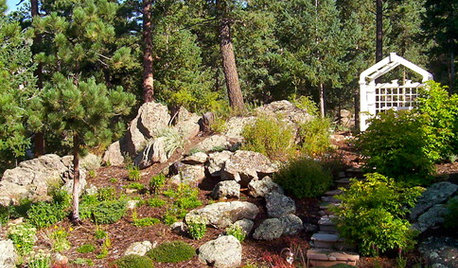
GARDENING GUIDESHave Acidic Soil in Your Yard? Learn to Love Gardening Anyway
Look to acid-loving plants, like conifers and rhododendrons, to help your low-pH garden thrive
Full Story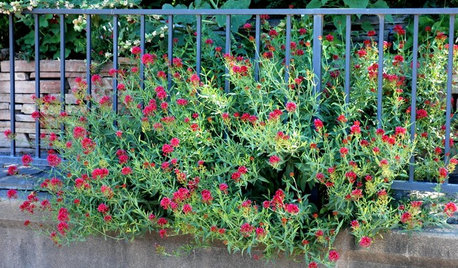
GARDENING GUIDESGrow a Beautiful Garden in Alkaline Soil
Got alkaline soil? Learn how to manage it and the many beautiful plants that will thrive in this ‘sweet’ soil
Full Story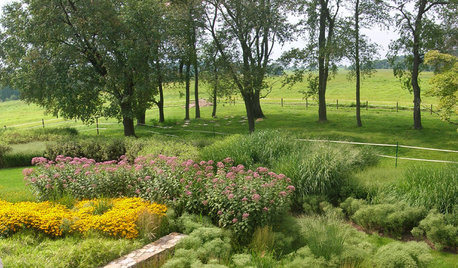
GARDENING GUIDESHow to Stop Worrying and Start Loving Clay Soil
Clay has many more benefits than you might imagine
Full Story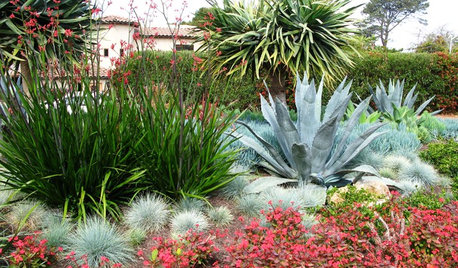
GARDENING GUIDESGardening Solutions for Dry, Sandy Soils
Has your desert or beachy site withered your gardening creativity? Try these ideas for a beautiful, easy-care landscape
Full Story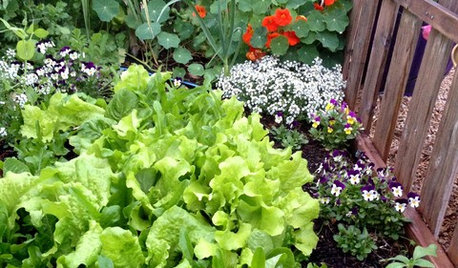
GARDENING GUIDESThe Poop Scoop: Enrich Your Soil With Good Old Manure
Get over the ick factor already — this natural super-ingredient for soil has so many benefits, you'll wonder why you ever went chemical
Full Story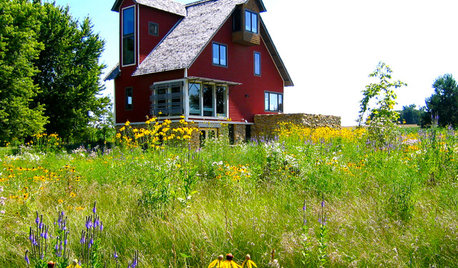
GARDENING GUIDESGardening Solutions for Heavy Clay Soils
What’s a gardener to do with soil that’s easily compacted and has poor drainage? Find out here
Full Story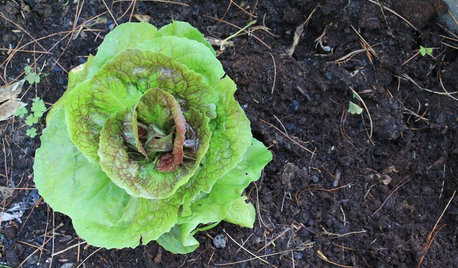
FARM YOUR YARDHow to Get Good Soil for Your Edible Garden
The nutrients in your soil feed the plants that feed you. Here are tips on getting it right — just in time for planting season
Full Story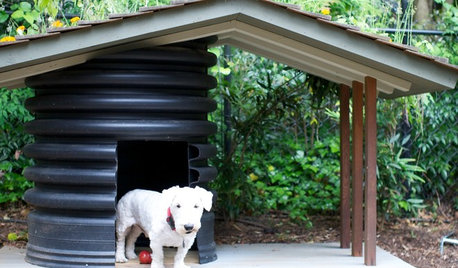
PETSHow to Help Your Dog Be a Good Neighbor
Good fences certainly help, but be sure to introduce your pup to the neighbors and check in from time to time
Full Story
PETS6 Ways to Help Your Dog and Landscape Play Nicely Together
Keep your prized plantings intact and your dog happy too, with this wisdom from an expert gardener and dog guardian
Full Story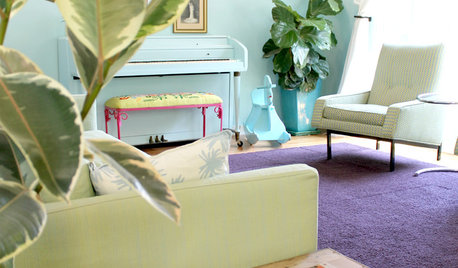
HOUZZ TOURSMy Houzz: Saturated Colors Help a 1920s Fixer-Upper Flourish
Bright paint and cheerful patterns give this Spanish-style Los Angeles home a thriving new personality
Full Story



amnorcalOriginal Author